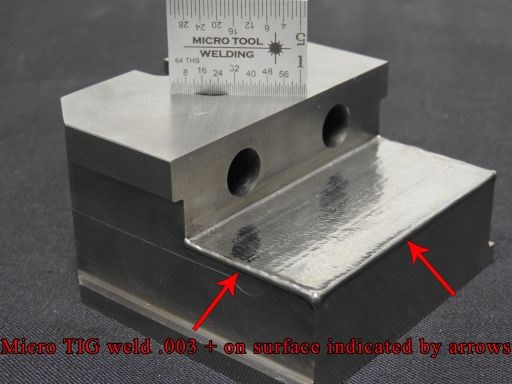Mastering Micro-TIG Welding
Successfully meeting customer expectations for micro-TIG welding mold repair demands a certain level of knowledge and technique.

The most critical concern for customers when it comes to mold repair today is quality. If a customer has parts repaired and then within a short time period those same parts are in need of repair again, it not only reflects poorly upon the welder, now the customer is stuck spending more money and time having those same parts repaired for a second time. This causes a lot of aggravation, resentment, and quite possibly the loss of that customer.
Mold repair entails some form of welding, and micro-TIG welding has been losing popularity due to the recent prominence of laser welding. The reason is because micro-TIG requires years of practice before one can master the process consistently to produce acceptable quality results and readily solve problems that occur during the welding process. Laser welding, on the other hand, has a shorter learning curve, which has fueled its increased usage in manufacturing today.
Both processes have their place in today’s modern mold shops, but with customers continuing to increase their focus on quality, turnaround time and cost, employing micro TIG welding effectively requires a certain level of experience because it employs very small wire and a very tight arc gap, which requires very low amperage and keeping the electrode very close to the workpiece.
Micro-TIG welders need a solid understanding of metallurgy, heat treatment (pre and post heating), welding wire, welding rod material properties and the different techniques used for a wide variety of tool steels. This is because tool steels require specific preheating and post heating temperatures.
Turn-around time ranks a close second in importance to quality because the customer is basically losing money while parts are out for repair. Production cannot proceed until repaired parts are returned. Micro-TIG welding offers speedy turn-around time, but again it all depends on a competent operator. An experienced micro-TIG welder knows how the welding process will affect the expected results and can utilize best practices to achieve them.
Experience also plays a part in cost, which is the third greatest customer concern. If you have acquired helpful micro TIG welding techniques over the years, you will be able to save time and money for your customer. Also, if you are capable of employing different strategies that can save the customer time and money, those customers will be more likely to return to your company for their welding needs. And, the sooner you finish repairing parts for one customer, the sooner you can begin working on other customers’ parts. It’s a win-win.
Related Content
-
What You Need to Know About Hot Runner Systems and How to Optimize Their Performance
How to make the most out of the hot runner design, function and performance.
-
5 Hot Runner Tips for Moldmakers and Molders
Best practices for initial hot runner tryouts and effective preventive maintenance.
-
Portable Low-Heat, Non-Arcing Resistance Welder for Mold Repair
Rocklin’s user-friendly MoldMender Micro Welder delivers simple and cost-effective localized repair in-house with precision and versatility, enhancing mold and die durability and reducing disassembly and downtime.















.jpg;maxWidth=300;quality=90)
